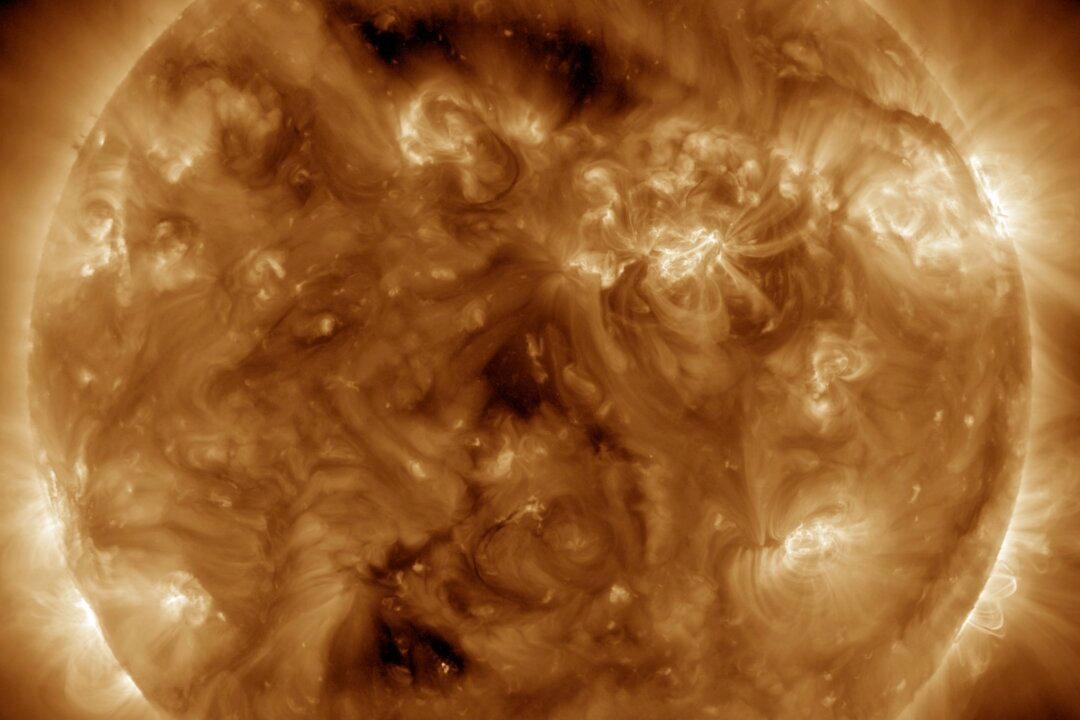A fast-growing giant sunspot that can emit solar flares has more than doubled in size in recent days and is currently facing Earth, according to experts.
Sunspots are dark areas of strong magnetic fields on the sun’s surface. They appear dark because they are much colder than other parts of the sun’s surface, having formed at areas where magnetic fields are particularly strong, according to NASA.





